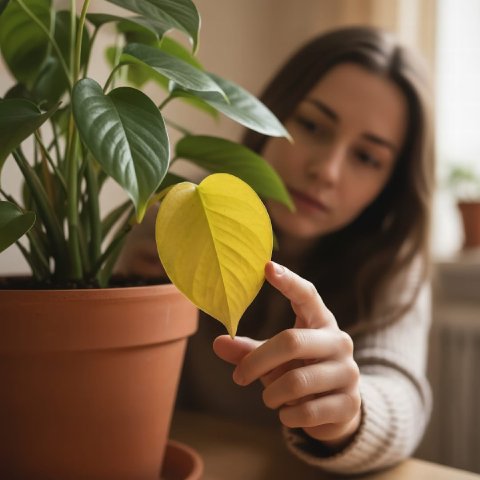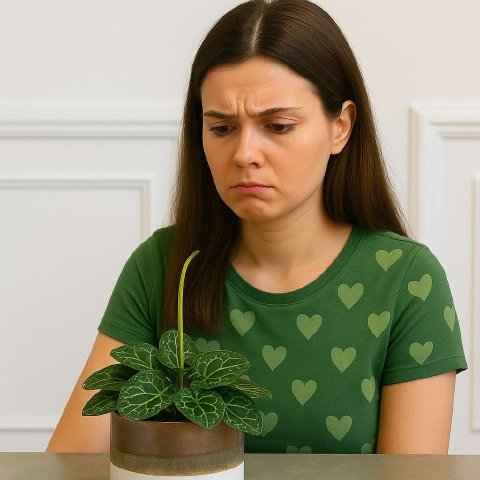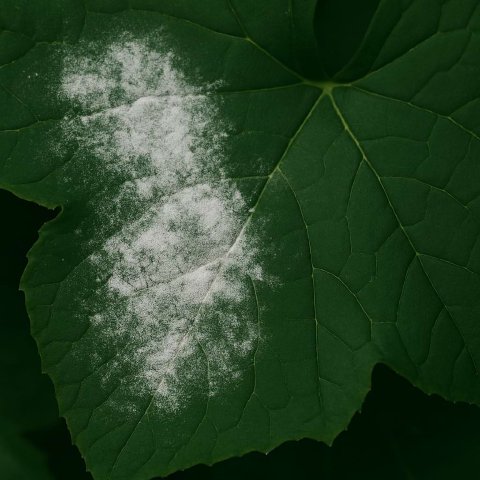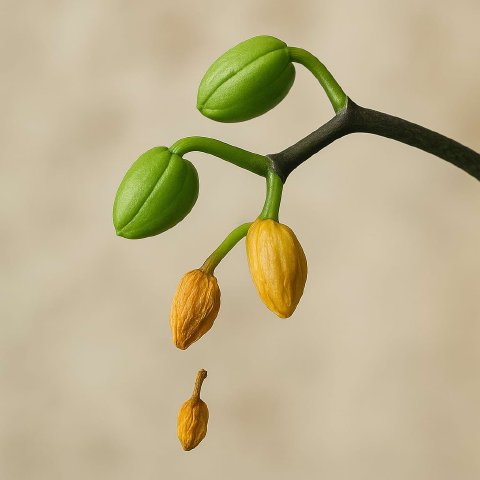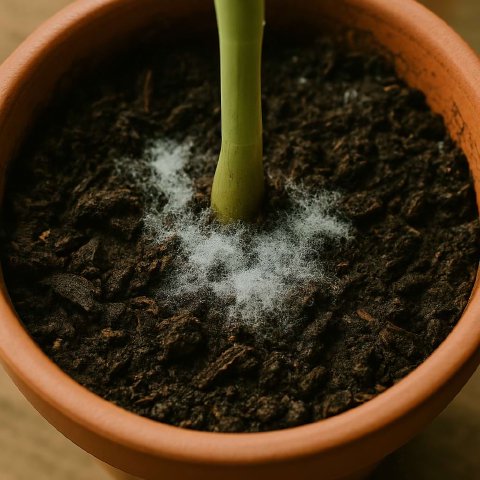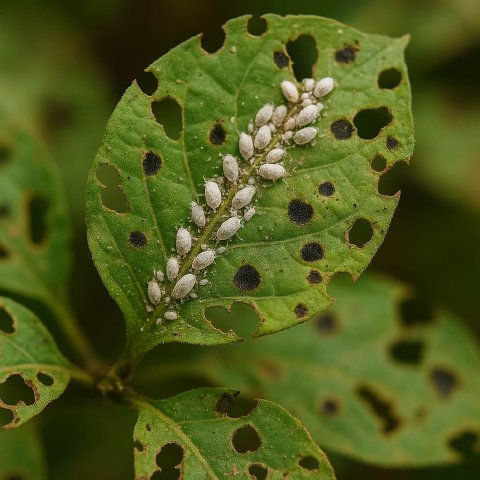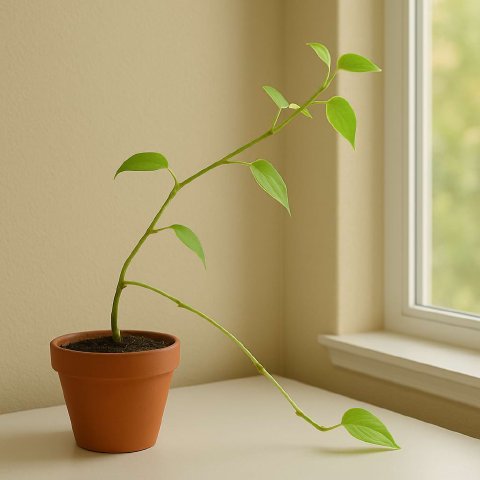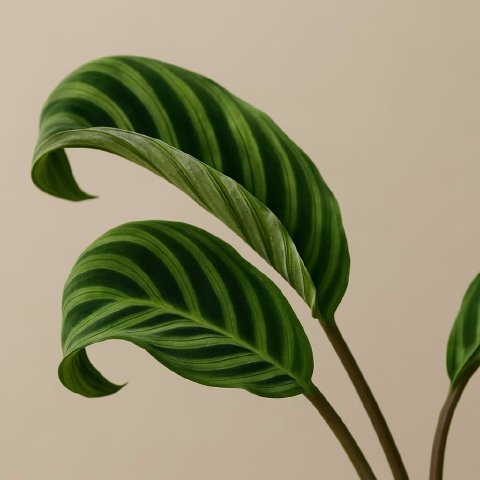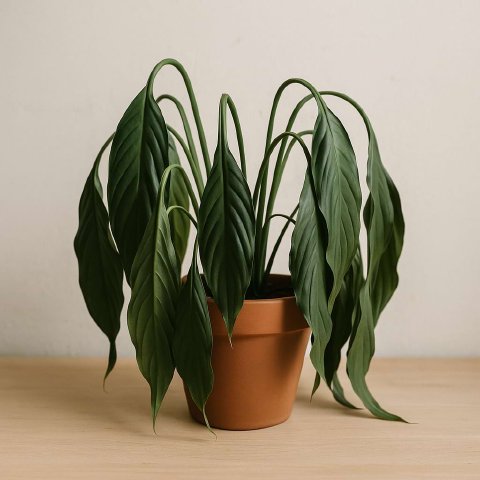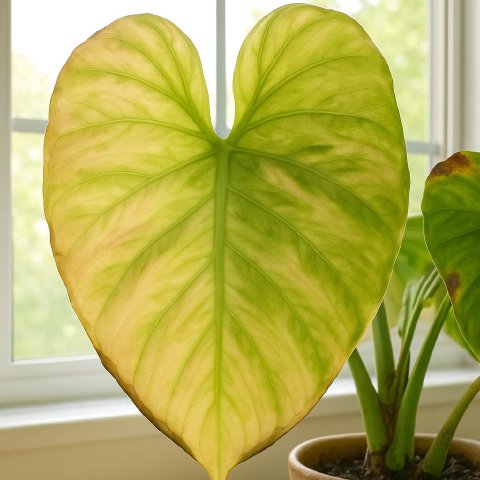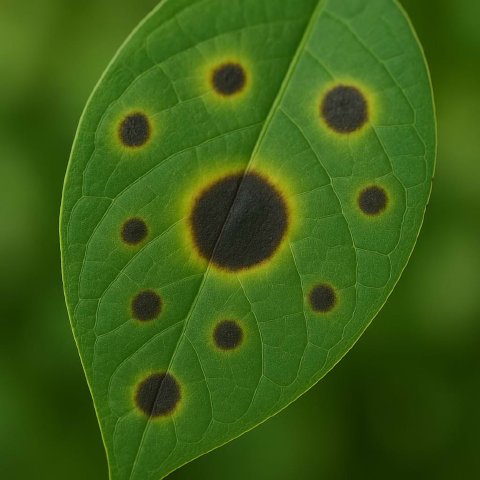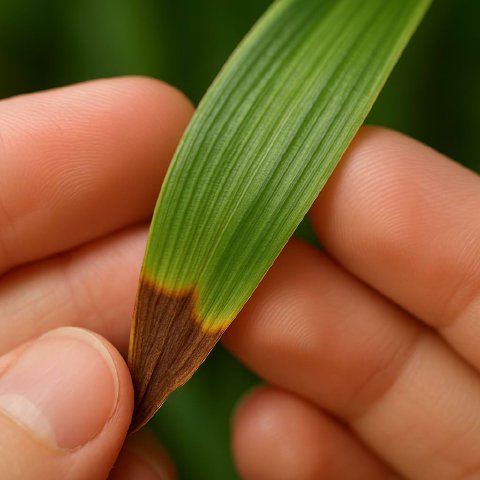🪴 In This Guide 🪴
🎯 Pale or Stunted Plant? Let's Diagnose the Problem
Quick Diagnostic Chart
Hello, plant friends! Anastasia here. Is your plant looking pale, yellow, and just generally lackluster? Has its growth slowed to a crawl? If so, your plant might be hungry!
While nutrient deficiency is a very common cause of pale leaves, other issues like improper lighting or pests can also be the culprit. You can explore all potential causes in our main guide to pale and faded leaves.
A nutrient deficiency occurs when your plant has used up all the “vitamins” in its soil. Different deficiencies show up in different ways. This chart will help you play detective.
| If you see… | On these leaves… | It’s likely a… |
|---|---|---|
| A general, uniform yellowing or pale green color | Older, lower leaves | Nitrogen (N) Deficiency |
| Yellowing between the green veins | Older, lower leaves | Magnesium (Mg) Deficiency |
| Yellowing between the green veins | Newest, upper leaves | Iron (Fe) Deficiency |
| Yellowing or browning along the edges/margins | Older, lower leaves | Potassium (K) Deficiency |
🤔 Why Do Plants Get Hungry?
Mobile vs. Immobile Nutrients
The soil in a pot is a finite resource. Over time, your plant absorbs all the available nutrients. To survive, it has to make tough choices. This is where the concept of “mobile” vs. “immobile” nutrients comes in.
- Mobile Nutrients (like Nitrogen, N): The plant can move these nutrients from old, less important leaves to fuel new, vital growth. This is why a nitrogen deficiency shows up as yellowing on the bottom leaves first.
- Immobile Nutrients (like Iron, Fe): The plant cannot move these nutrients once they are in a leaf. If there’s a shortage, the new growth can’t get any, and so the deficiency appears on the top of the plant first.
Understanding this helps you read the signs your plant is giving you.
🌿 Common Nutrient Deficiencies and How to Fix Them
The Overarching Cause: Depleted Soil
While we can look at specific symptoms, 99% of houseplant nutrient issues stem from one single cause: the plant has been in the same pot for too long without being fed. The soil is simply empty.
The Universal Fix: The best way to fix almost any nutrient deficiency is a two-pronged approach:
- Short-Term: Begin feeding your plant with a balanced, all-purpose liquid fertilizer (e.g., 10-10-10) diluted to half-strength. Apply every 2-4 weeks during the spring and summer.
- Long-Term: Repot your plant into fresh, high-quality potting mix. This provides a full new pantry of nutrients for your plant to use. Most plants benefit from this every 1-2 years.
Below are the specific signs if you want to get more detailed.
Symptom #1: General Yellowing on Lower Leaves (Nitrogen Deficiency)
- What it looks like: The oldest leaves at the bottom of the plant will start to turn a uniform pale green, then yellow, before eventually dropping off. Growth will be stunted. This is the most common deficiency.
- Why it happens: Nitrogen is the key building block for chlorophyll and proteins. As a mobile nutrient, the plant sacrifices its old leaves to send nitrogen to the new ones.
- The Fix: Use a balanced liquid fertilizer. Most general-purpose fertilizers have plenty of nitrogen to solve this problem quickly.
Symptom #2: Yellowing Between Veins (Magnesium or Iron Deficiency)
- What it looks like: This is called “interveinal chlorosis.” The veins of the leaf stay green, but the tissue between them turns yellow, often in a striped or mottled pattern.
- Why it happens: Magnesium is the central atom in a chlorophyll molecule, and iron is required for its synthesis. Without them, the plant can’t produce green pigment between the veins.
- The Fix: Check the location. If it’s on older, lower leaves, it’s likely a Magnesium deficiency. If it’s on the newest, upper leaves, it’s an Iron deficiency. A balanced fertilizer containing micronutrients will usually fix this. For a severe magnesium issue, a very dilute solution of Epsom salts (1 tsp per gallon of water) can help.
Symptom #3: Yellowing/Browning on Leaf Edges (Potassium Deficiency)
- What it looks like: The edges of the older leaves will turn yellow, and this yellowing will then turn brown and crispy, looking similar to leaf scorch.
- Why it happens: Potassium is vital for regulating a plant’s water usage and overall health.
- The Fix: A balanced fertilizer with a healthy “K” number in the N-P-K ratio will solve this.
🛡️ How to Prevent Nutrient Deficiencies
Best Practices for Well-Fed Plants
- Fertilize During the Growing Season: From spring through summer, when your plant is actively growing, feed it every 2-4 weeks with a diluted balanced fertilizer.
- Stop Feeding in Winter: In fall and winter, most houseplants are dormant and don’t need fertilizer. Feeding a dormant plant can burn its roots.
- Repot Every 1-2 Years: This is the best way to give your plant a complete nutritional reset. Fresh soil is full of the macro- and micronutrients your plant needs.
- Ensure Overall Plant Health: A plant suffering from improper light or watering can’t effectively absorb nutrients, even if they are present in the soil. Healthy practices are key.

